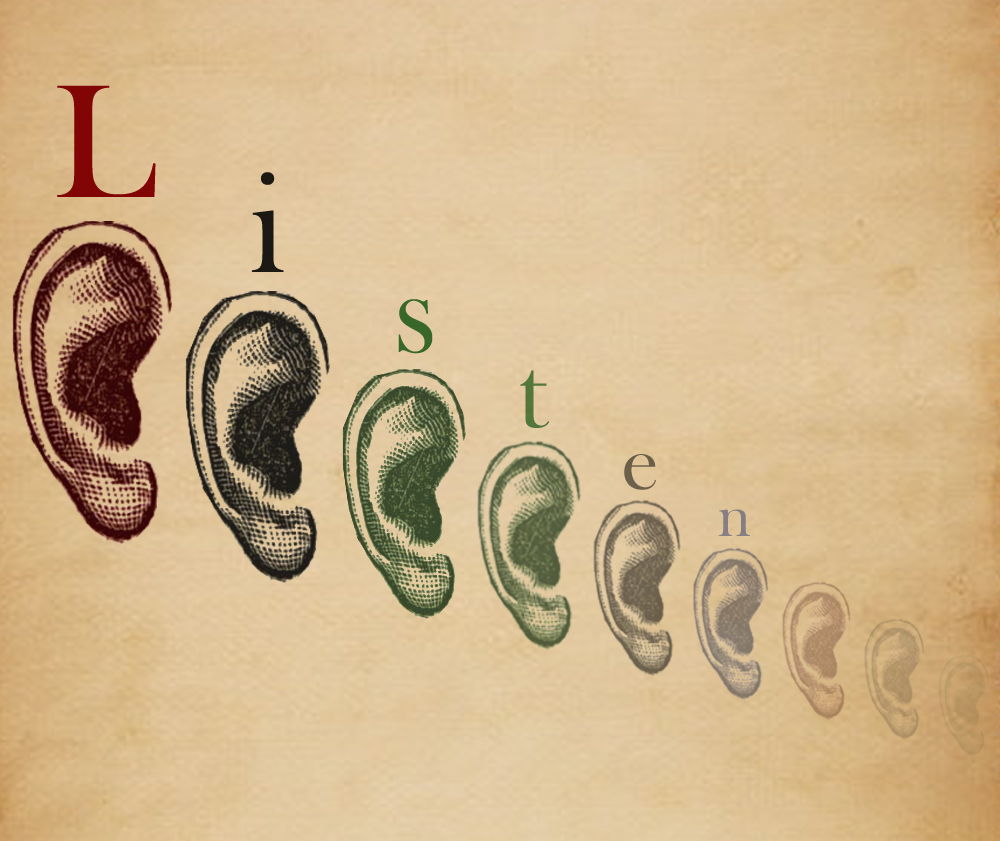
The foundation of any successful long-term business is a deep, ongoing relationship with your clients.
Sounds simplistic, but you know what? Really listening to and getting to know your ideal client is more important than any marketing tactic you could learn, because the best business strategy on the planet is to solve real problems so your clients can get, do or be what they really want.
Once you dial in at this level and fine-tune your marketing message so it speaks directly to your ideal client’s soul, you’ll never have to worry about getting enough business again. (Or feel like you’re not making a difference with your message.)
But the only way to do it is to actually take the time to LISTEN to what your prospects really want.
There are FOUR ways to listen:
- one-to-one (i.e. applications, questionnaires, free discovery calls)
- one-to-many (i.e. surveys, live events, webinars)
- internet research (i.e. social media, Amazon reviews, forums, etc)
- competitive analysis or industry research (i.e. Google, keyword research, Alexa, Quantcast, your peers and mentors)
Regardless of whether you choose to talk to your ideal clients one-to-one or you research what they’re saying on Facebook, there are 6 simple guidelines for market research to help you listen for the right things, and ignore everything else.
1. Carefully Choose Who You Listen To
The only danger in doing market research is tuning in to the wrong people and letting their advice lead you astray.
For example – the temptation is strong to ask your friends and family or people you know and respect for their feedback, but they may not be qualified to give you meaningful feedback in this area.
Like a radio, you only want to dial in to the people that matter and they fall into just 3 camps: your ideal clients (whether or not they’re already working with you); people with substantial firsthand knowledge or experience with your ideal clients; and people you’re paying for advice.
2. Look for Patterns
There are always going to be “crazies” out there — those people who see the world through their own rose colored glasses, whose opinions seem to come out of left field. And the truth is, it does.
So if anything seems off-base to you, just ignore it and move on. Don’t let any single person’s advice or criticism throw you off your path. Chances are they’re sitting on an unfulfilled dream or just do things a little differently.
Instead, look for the trends and patterns. The words or phrases or sentiments that pop up over and over again. Those are the ones with truth. And those are the ones you want to base your message on.
3. Listen for Specific Problems
All business is about solving problems. If you want more clients, listen to their problems, frustrations and challenges. Ask them what’s getting in their way of achieving a specific outcome, what’s stopping them from doing what they want, what that sticking point is. And listen to the specific language they’re using to describe their problems to you.
People love to talk about their problems and if you listen closely they’ll tell you exactly where they are and where they want to go. One of my clients told me that marketing her business online made her feel like her head was going to explode and she just wanted the next step.
This was an eye-opener for me since I tend to think in big systems and comprehensive plans. I realized I needed to create a program that really broke it down step-by-step and only gave my clients the next action they needed to take. I had to simplify my program to cut down on the paralysis and overwhelm but still structure it in a way that laddered up to the promise of becoming the #1 authority in your field. Message to Money was born.
4. Find Your Clients’ Buying Triggers
You’ve probably heard that people buy based on emotions rather than logic and that you have to make an emotional connection with your audience if you want them to buy from you and share your work.
While that’s true, you also want to trigger an instant gut response and back your message up with a compelling reason to buy, since people make buying decision based on all 3 parts of their brain – the reptilian (or survival center), the limbic (or emotional center) and the neocortex (or logical center.)
As humans, we’re more alike then we are different and this is especially true about our deepest motivations and desires. The truth is that there are only about a dozen universal drivers that really inspire us to buy:
- save time (no matter how fine-tuned your message, you still want to include words such as quickly and even instantly)
- avoid effort (simply and easily, step-by-step, fool-proof, roadmap)
- save money (this is why discounts, deals and limited-time offers work so well)
- make money (this is why business and finance are two of the most profitable niches out there)
- feel safe and secure (nothing taps into our lizard brain as much as the need for safety, especially for parents)
- relieve pain and improve health (no matter how much we learn, we’re still limited to the physical bodies we live in)
- increase happiness
- become successful, famous or recognized
- have fun
- feel attractive
- find love and community
- realize full potential and make a contribution
Sound familiar? I bet you’ve seen these reasons in just about every piece of marketing you’ve ever encountered.
Start to pay attention to how these drivers show up in your ideal clients language. Oftentimes, these drivers are the really reason your clients buy…
5. Keep a Swipe File of Power Words and Client-Specific Vocabulary
Legendary copywriter John Carlton is fascinated by what he calls “power words”, or language that “carries emotional wallop,” produce a gut reaction, evoke a strong visual, or prompt a memory in the mind of your reader.
Power words are often action verbs or vivid turns of phrases or simply words with a high emotional charge. It’s the difference between saying “overweight” and “fat”. Or between “revenue” and “money”. Or, more subtly, between “show” and “reveal”.
So remember to be on the lookout, since you might find the perfect language that just opens up your headline in the least expected places. It could be something someone says in the checkout line at the grocery store or something you read on a billboard while driving 70 mph down the highway. Stay curious, alert and aware and inspiration will find you.
Keep a document (called a swipe file) with all these words, so you can draw from it anytime you’re working on your marketing.
Also, if your ideal client belongs to a specific industry or occupation, such as law or coaching or wellness, then pick out the top 10 terms specific to that industry and seed them into your message. This is what message guru Joel Roberts calls a “credibility cluster,” because these words will quickly establish rapport and credibility with anyone in that specific field.
Alternatively, if your clients belong to a certain generation or sub-culture, listen for turns of phrase or colloquialisms that will make your message more accessible to them.
6. Finally, Be Open
This sounds obvious, but you’d be amazed how often people ask questions without being wiling to hear the answer.
Instead of assuming you already know what your clients want and looking for confirmation on what you’ve already created, really take a step back and listen with an open heart and an open mind.
If you ask the right questions, your clients will tell you exactly where they are, what they want and what you need to say and do to attract them as a client. Once you really hear them, not only will you be able to market to them effectively, but you’ll be able to serve them at a deeper level and get them fired up and motivated.
OK, that’s all. Thanks for letting me listen in to you and keep your questions and comments flowing…
Love it? Hate it? Let me know...
-
This is all very helpful – not the standard list of marketing tips! I will start a swipe file… NOW! It’s very appealing to my double Virgo organizational OCD!
-
Swipe files are CRAZY helpful!
-
-
This looks good but I will do not and will not use Facebook.
-
That’s your choice Virginnia. There are many other ways to do market research.
-


























Leave a Comment